Discover the most vibrant celebration of June in the Peruvian Amazon! If you’re searching for an authentic cultural experience wrapped in jungle tradition, the San Juan Festival in Peru is something you can’t miss. Held every June 24, this joyful event blends Catholic devotion, ancestral rituals, river ceremonies, music, dance, and the irresistible aroma of juane, the star dish of the day.
Whether you find yourself in Iquitos, Tarapoto, or Puerto Maldonado, get ready for processions, river blessings, and a warm community atmosphere that turns the rainforest into a living celebration. Here’s everything you need to know to live the Festival of San Juan 2025 like a local.
What is the San Juan Festival
In the Peruvian Amazon, June 24 isn’t just a date on the calendar, it’s a celebration that brings entire communities together around faith, nature, and identity. Known as Fiesta de San Juan or San Juan Festival honors Saint John the Baptist, who is revered not only as a religious figure but also as a spiritual protector of the jungle and water. During this time, the atmosphere is religious but also joyful, the city fills with music, rivers become sacred, and every dish and dance spaces carries meaning. San Juan isn’t just celebrated—it’s lived.
You might be interested: Amazon rainforest packing list
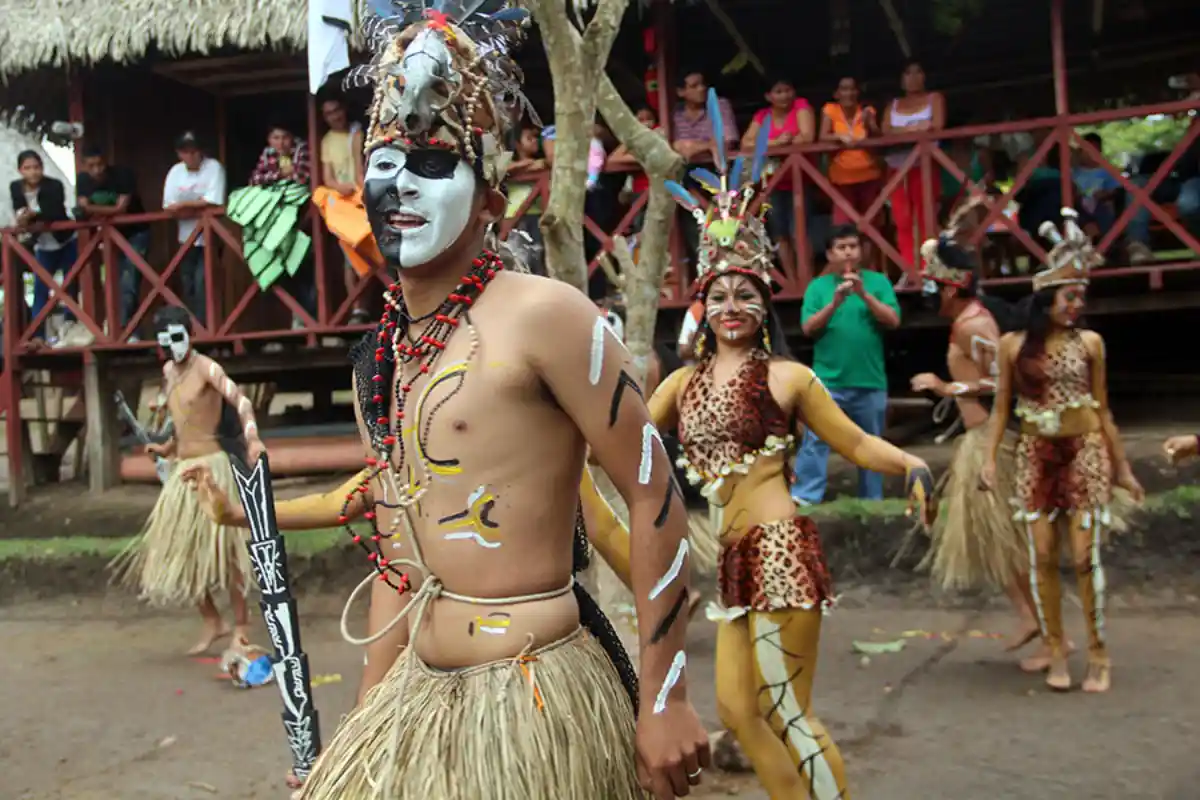
When is the San Juan Festival celebrated?
The festival of San Juan in Peru is celebrated every year and this year it is celebrated on Tuesday, June 24, coinciding with the Catholic feast of St. John the Baptist. But the celebration usually begins a few days earlier, especially in jungle regions such as Loreto, San Martin and Ucayali. Festivities usually begin around June 21 or 22, and prepare for the main event with local fairs, musical performances and spiritual rituals. June 24 is considered a public holiday in many parts of the Amazon, and everything – from schools to markets – closes in honor of the saint.
Where to celebrate the San Juan Festival in Peru
Although the Festival of San Juan is mainly associated with the Peruvian jungle, its spirit is experienced in many corners of the country, each with its own style, customs and emotions. From the banks of the Amazon to the squares of the Andes, this festival leaves its mark on those who experience it up close.
Iquitos: The capital of the Peruvian Amazon
Iquitos, in the Loreto region, is one of the most emblematic destinations to experience this festival. Here, from June 21, the city is filled with tropical music, dances in public squares, craft fairs and concert nights with local artists. On June 24, thousands of people head to the Nanay or Itaya river for the traditional ritual bath, a symbol of purification and renewal. There is also a procession with the image of San Juan and, of course, the tasty juane served in every home, restaurant and corner of the Belen market.
You might be interested: Inti Raymi in Cusco 2025
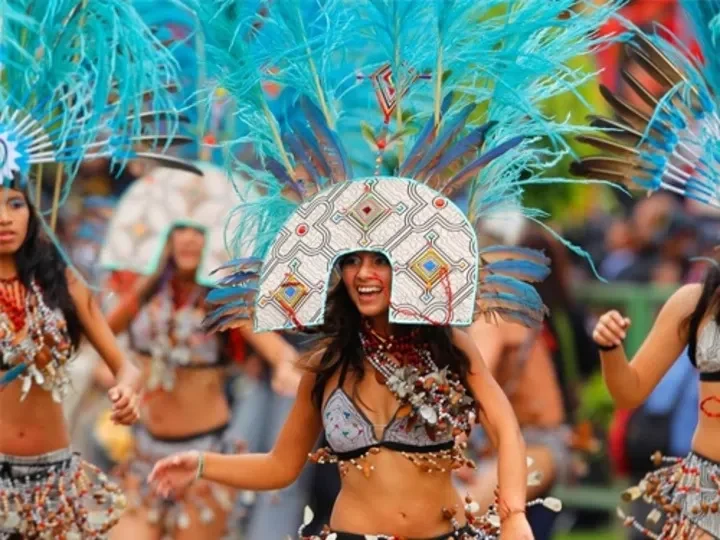
Tarapoto and Lamas
In San Martin, the cities of Tarapoto and Lamas also offer an intense experience. In addition to religious activities, there are juanes contests, typical dances such as the pandilla loretana, canoe races and festivals that last until the wee hours of the morning. In Lamas, a town with a strong Quechua-Lamista identity, the festival incorporates unique Andean-Amazonian elements, where earth rituals intertwine with Catholic prayers.
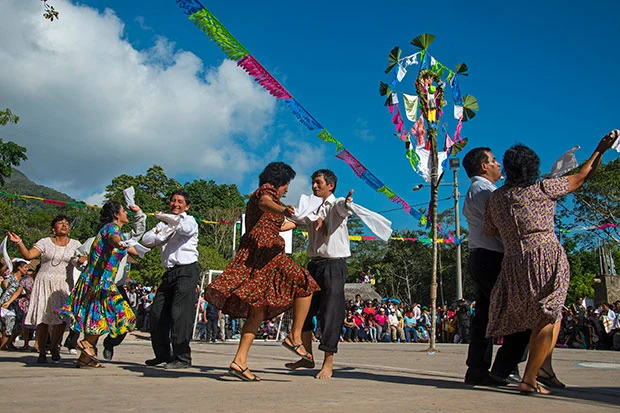
Puerto Maldonado “Biodiversity Capital of Peru”
In Madre de Dios, the San Juan Festival is a family and spiritual event. Masses are celebrated in the neighborhoods, the traditional walk to the Tambopata River is organized, and in some nearby lodges there are themed dinners with live music. It is the perfect time to get to know the jungle in a more intimate and communal way. The river beaches are filled with families, and many indigenous communities also participate with their own rituals.
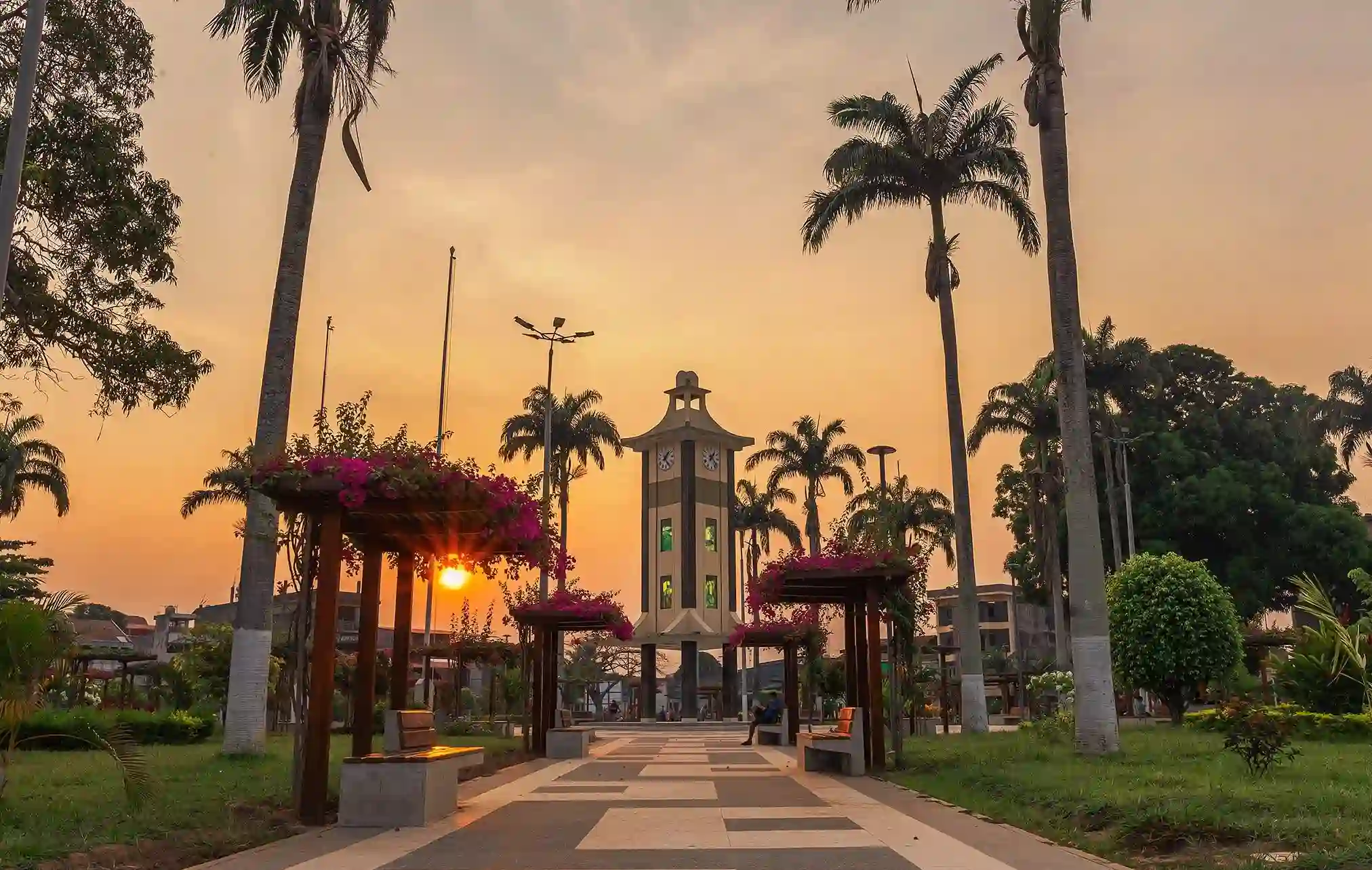
Cusco: The imperial city
Although Cusco is not in the Amazon, the district of San Juan de Taray in Calca and some rural parishes celebrate this day with intensity. Masses, folkloric dances, and fairs are held in honor of St. John the Baptist, patron saint of several communities. In the Sacred Valley area, some towns combine this festivity with Andean agricultural rituals, thanking the Pachamama for the harvests and making small payments to the land. It is a different, but equally profound, way of connecting with this tradition.
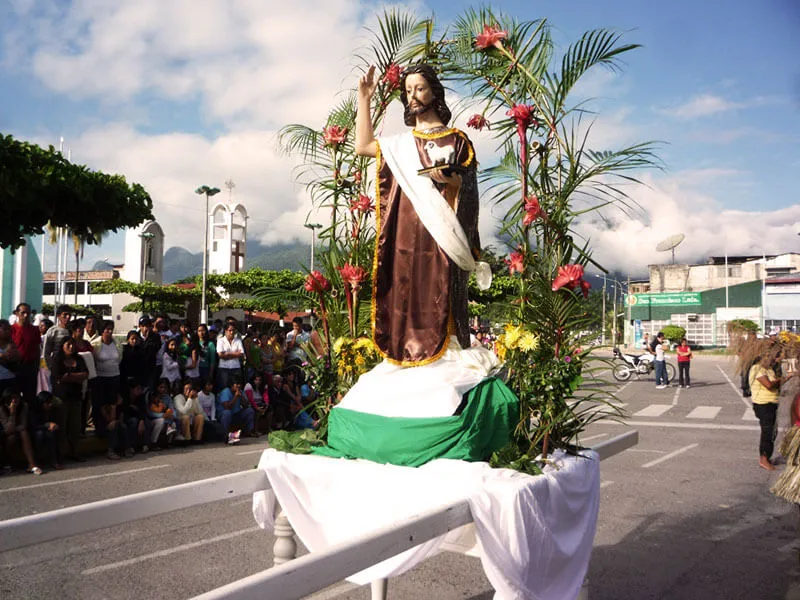
Ucayali “Red Earth”
In Ucayali, the city of Pucallpa lives the festival with a contagious energy. Craft fairs, shows in the Plaza de Armas and juane and local beauty contests are held in the weeks leading up to the festival. On June 24, families flock to the banks of the Ucayali River to participate in the ritual bath, and the image of San Juan is carried in procession by land and water. The markets are filled with the aroma of cecina, tacacho and camu camu, and the entire center becomes a cultural meeting point.
You might be interested: Amazon Jungle Mysteries
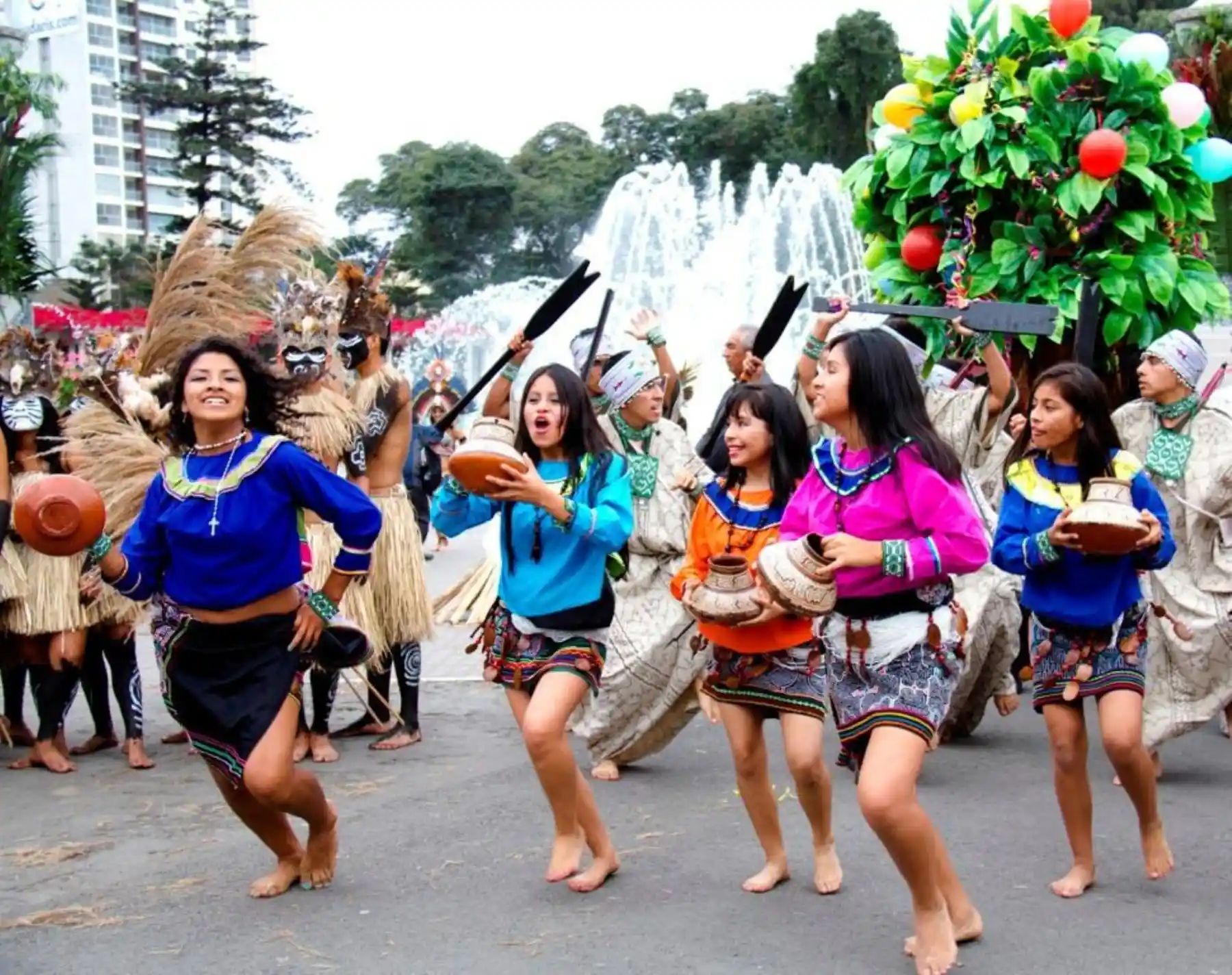
Traditions and rituals during the San Juan festival
The San Juan Festival in Peru, celebrated every June 24, blends religious devotion with rich Amazonian traditions that go far beyond the surface. In the heart of the jungle, these rituals connect communities with the cycles of water, fire, food, and faith—creating a celebration that feels both ancient and vibrantly alive.
The sacred bath
One of the most iconic and widespread customs is the baño bendito, or blessed river bath. On the morning of June 24—or in some regions, the night before—people head to rivers or lagoons to bathe. It’s believed that on this day, the waters are touched by the spirit of Saint John, becoming sacred and cleansing. The act purifies the soul, wards off bad luck, and ensures health and protection throughout the year.
In places like Iquitos, Pucallpa and Puerto Maldonado, this ritual takes place at dawn. Families bring flowers, candles, or natural offerings to leave by the riverbank, turning the act into a personal and spiritual moment that’s often shared with the community.
The Fire Ceremony
In various native communities, especially among the Shipibo-Conibo and Asháninka peoples, the ceremonia del fuego (fire ceremony) is performed during the San Juan celebrations. This ritual, sometimes held on the night of June 23, involves lighting a large communal fire around which people gather to offer symbolic items—like herbs, food scraps, or written wishes.
The ceremony serves two purposes: spiritual renewal and letting go of the past. The fire “burns away” envy, illness, and negative energy, while opening the way to new beginnings. Some communities call this tradition “Puraki”, meaning burning to cleanse in certain Asháninka dialects.
The Juane: sacred dish of the jungle
No San Juan celebration would be complete without Juane, the dish that has become the culinary emblem of the festival. Its round shape is said to represent the head of Saint John the Baptist, and its ingredients reflect local identity: rice, chicken (or fish in some areas), olives, egg, and spices, all wrapped in bijao leaves and steamed.
But during the festival, juane takes many forms:
- Juane de gallina: the most common variety.
- Juane de yuca: made with cassava and fish in indigenous communities.
- Avispa Juane: a version from Moyobamba with minced meat, egg, and peanuts.
Each family or region puts its own twist on the recipe, and juanes are usually prepared the night before to be shared the next day at public parks, homes, or riverbanks.
Traditional dances: pandilla and humisha
In most Amazonian cities, la pandilla is the dance of San Juan. Performed in pairs and large circles, it involves quick footwork and cheerful music played by live bands. The dancers often circle a humisha—a palm tree decorated with gifts, balloons, and ribbons—before taking turns trying to cut it down in a symbolic act of abundance and community effort.
This part of the celebration is deeply festive and often ends with sharing food and drinks, laughter, and lots of jungle-style music like cumbia and música típica.
Religious and syncretic rituals
While the celebration is joyful and communal, its religious roots remain present. Many towns hold a misa en honor a San Juan Bautista, followed by a procession, sometimes by boat. The saint’s image is taken across the river or around the town, accompanied by singing, floral offerings, and banners. This blend of Catholicism with Amazonian spirituality creates a unique syncretic atmosphere where saints, ancestors, and the elements coexist.
You might be interested: Amazon Shamans: Traditional practices of peruvian healing
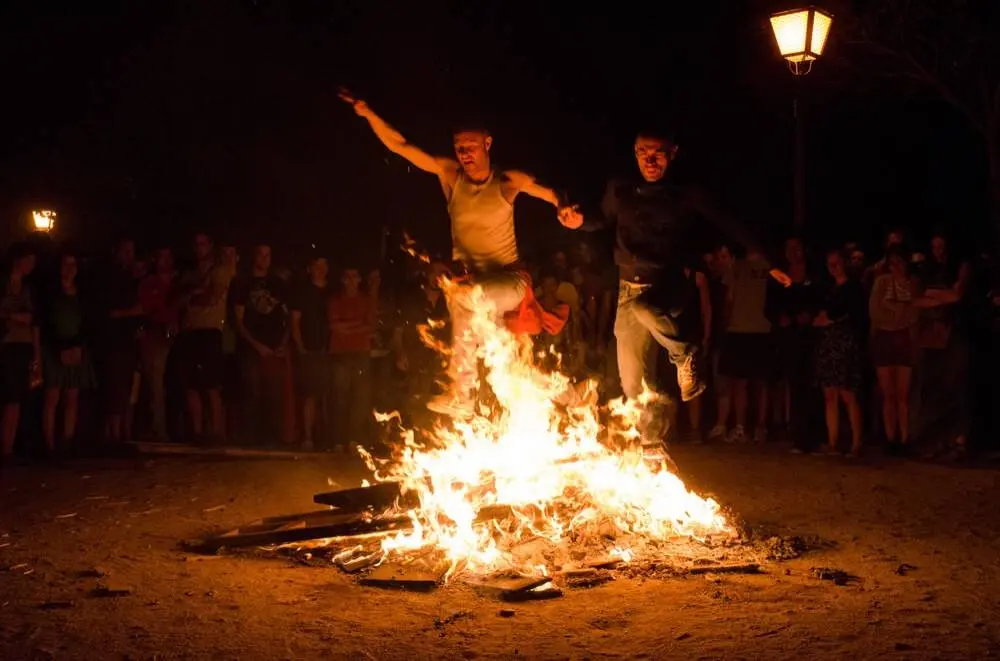
How to Get to the San Juan Festival Destinations
Whether you’re heading to the heart of the jungle or a riverside town, getting to the San Juan Festival in Peru is part of the adventure. Here’s how to reach the most iconic destinations where the celebration comes alive:
Iquitos (Loreto)
The city of Iquitos, considered the capital of the Peruvian Amazon, is only accessible by plane or river. Most travelers fly from Lima, with daily flights offered by LATAM, JetSmart, and Sky Airlines. The flight takes about 1.5 hours. Once you arrive, moto-taxis are the main way to get around the city—fast, cheap, and part of the local charm.
Tarapoto and Lamas (San Martín)
Tarapoto is another key hub for San Juan festivities. It’s accessible by both air and land:
- From Lima: Flights take around 1 hour 20 minutes.
- Overland: Buses take over 24 hours, so flying is the better option.
- To reach Lamas, a smaller town with a Quechua-Lamista heritage, you can take a shared taxi or moto-taxi from Tarapoto. The ride is about 30–40 minutes and costs around $2–5 USD.
Pucallpa (Ucayali)
Pucallpa is well connected to Lima and offers an authentic local experience:
Flights from Lima take around 1 hour 15 minutes.
Long-distance buses take between 18–20 hours.
Once in Pucallpa, public moto-taxis and colectivos can take you to Yarinacocha and other areas where the festival is deeply rooted.
Remote communities and river lodges
If you want a more immersive experience, consider staying in eco-lodges or native communities near Tambopata, Pacaya Samiria, or along the Ucayali River. Some jungle lodges offer special San Juan packages that include:
- Transport from city airports or ports
- Full-board meals (including traditional dishes like juane)
- Guided participation in local ceremonies: Prices range from $80 to $250 USD per person, depending on the lodge and length of stay.

Tips for experiencing San Juan Festival in Peru
Traveling to Peru in June? If your dates align with June 24, you’re in for a cultural treat. The San Juan Festival is one of the most vibrant and heartfelt celebrations in the Amazon region. But to enjoy it fully—especially in places like Iquitos, Tarapoto, or Pucallpa—it’s important to go prepared. Here’s a complete guide with real, helpful advice that will help you live the experience like a local.
1. Arrive a few days early
Festivities don’t start and end on June 24. In most regions, activities begin around June 21 or 22, with concerts, markets, traditional games, and public dances. Arriving a few days early lets you soak in the full atmosphere—and you’ll beat the last-minute rush.
2. Pack light, breathable clothes
The Amazon is hot and humid during this time of year. Bring lightweight, moisture-wicking clothes, a wide-brim hat, sunscreen, and plenty of insect repellent. Flip-flops are fine for walking around town, but if you plan to join river or forest events, closed shoes are a must.
3. Respect local customs
Even if it’s festive, this is a deeply spiritual celebration for many communities. Participate in the baño bendito (ritual river bath) with respect—don’t treat it like a tourist attraction. If you attend mass or a procession, dress modestly and follow the locals’ lead.
4. Try the juane—but from the right place
Every household prepares juane, but during the festival, it’s sold everywhere. Look for busy stalls or locals lined up—it’s a good sign the food is freshly made. Don’t leave without trying juane de gallina or juane de yuca paired with a camu camu juice or chicha de jora.
5. Join the pandilla dance
You don’t need to know the steps—just jump in and follow the circle. The dance around the humisha (decorated palm tree) is joyful, inclusive, and one of the best ways to connect with people. You’ll likely be handed a drink or a bite of food—say yes.
6. Book accommodations in advance
In cities like Iquitos, Tarapoto, and Pucallpa, hotels fill up fast around San Juan. Try to book at least 2–3 weeks early, especially if you’re aiming for eco-lodges or riverside hotels. Some even offer special festival packages with tours included.
7. Travel light, but bring cash
Not all vendors or transport options accept cards. Having Peruvian soles in small denominations will make your experience smoother—especially in rural or riverside towns.
8. Stay safe and hydrated
Temperatures can exceed 30°C (86°F) and partying lasts from morning to night. Stay hydrated, take breaks in the shade, and wear breathable fabrics. Keep an eye on your belongings during large events, and move in groups if you’re out late.
You might be interested: Amazon Rainforest Trees: Facts you need to know 2025
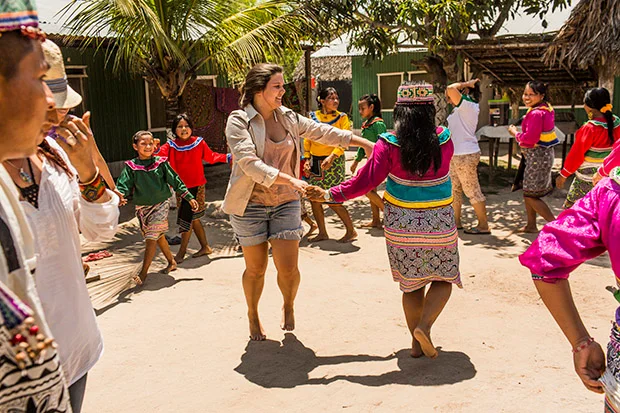
Frequently Asked Questions about San Juan Festival
If you are planning to travel to Peru in June and you stumble upon the San Juan Festival, it is normal that you have doubts. This Amazonian celebration is as special as it is different, and understanding its customs will allow you to enjoy it like a local. Here we answer the most common (and useful) questions travelers ask. Let’s get started!
1. When is the San Juan Festival celebrated in Peru?
The San Juan Festival is officially celebrated on June 24 each year, but in practice, the festivities begin a few days earlier. In regions such as Loreto, San Martin and Ucayali, from the 21st or 22nd there are already fairs, juane contests, popular dances and religious activities. The 24th is a regional holiday in most of the Peruvian Amazon.
2. Where is the best place to experience the Festival of San Juan in Peru?
It all depends on the type of experience you are looking for:
- Iquitos is the festive capital: big processions, concerts and the traditional “baño bendito” in the rivers.
- Tarapoto and Lamas offer a more Andean-Amazonian cultural atmosphere, with dances such as the “pandilla loretana” and gastronomic contests.
- Puerto Maldonado is more familiar, intimate and spiritual, ideal if you want to meet native communities and celebrate with a deep connection.Pucallpa in Ucayali also stands out with its colorful fair, typical food and celebrations by the river.
3. What is the meaning of the river bath ritual?
The famous blessed bath is performed on the morning of June 24. According to tradition, on that day the waters of the rivers are blessed by the spirit of St. John. People immerse themselves in the rivers or lagoons to cleanse themselves of bad energies and attract health, luck and renewal for the year. It is a sacred moment for many.
4. What food is eaten during the festival?
The protagonist is juane, a typical jungle dish with rice, chicken, egg, olive and spices, all wrapped in bijao leaves. Versions are also prepared with yucca, fish or ground meat (wasp juane). It is accompanied with chicha de jora, camu camu, cecina or tacacho.
5. What are the main dances of the festival?
The pandilla is the most popular dance, where everyone dances in a circle around a humisha (palm tree decorated with gifts). It is a symbol of abundance and community. In some cities, cumbia selvatica and Andean-Amazonian huaynos are also danced.
6. Is the San Juan Festival religious or cultural?
Both. It has Catholic roots, in honor of St. John the Baptist, but is deeply linked to Amazonian rituals. There are masses, processions and also fire ceremonies, offerings to the Pachamama and purification baths. It is a clear example of Peruvian syncretism.
7. What should I wear to attend the festival?
Light clothing, long sleeves (for mosquitoes), hat or cap, sunglasses, insect repellent and closed shoes. If you are going to participate in the ritual bath or attend night celebrations, don’t forget a dry change of clothes, rain poncho and a flashlight.
8. Is the festival free to attend?
Yes. Most activities in plazas, fairs, churches and rivers are completely free. Some concerts or festivals may have entrance fees between $5 and $15 USD. Accommodations and flights tend to go up in price during these dates, so book in advance.
9. Is it safe to attend the San Juan Festival as a tourist?
Yes, it is safe, as long as you follow basic precautions: stay hydrated, don’t leave your personal belongings unattended at massive events and avoid poorly lit areas at night. The ideal is to participate in groups, with local guides or recommendations from your lodging.
10. Should I book accommodation in advance?
Definitely. In destinations such as Iquitos, Tarapoto or Pucallpa, accommodations fill up two weeks in advance. If you want to stay in an eco-lodge or in hotels overlooking the river, it is best to book at least 3 weeks in advance.
11. Is June 24 a holiday in Peru?
Yes, June 24 is a regional public holiday in Amazonian departments like Loreto, Ucayali, and San Martín. Schools, banks, and most businesses close to honor San Juan.
Experience the San Juan Festival in 2025
If you’ve ever dreamed of connecting with Peru beyond Machu Picchu, this is your chance. The San Juan Festival is not just a colorful event, but a profound and emotional expression of identity, community and joy in the Amazon. Whether dancing barefoot around a humisha or taking your first juane by the river, this is the kind of travel moment that will stay with you. Planning a trip to Peru in June? Let the festival be the reason you finally pack your bags.



